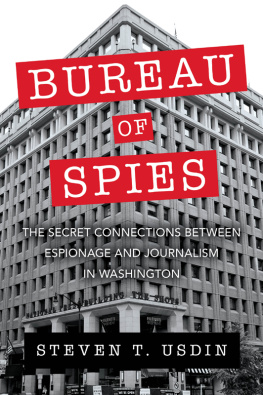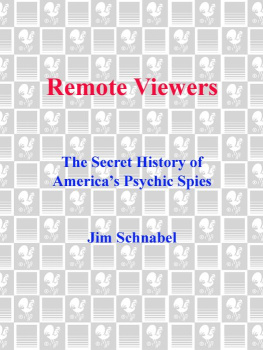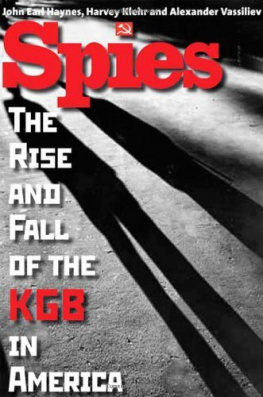This book is a history of the connections between intelligence and journalism, of spies who pretended to be reporters and reporters who dabbled as spies, told by examining covert activities that occurred in a building four blocks from the White House, the National Press Building.
Conducted properly, spying leaves few traces. Some of the stories in Bureau of Spies have been revealed because governments no longer feel compelled to keep them secret. Others were revealed when Nazi Germany and imperial Japan found themselves on the wrong side of history and were forced to disgorge their secrets. Post-Watergate attempts to rein in government abuses of power led to revelations about collaboration between American news media and the CIA, as well as the CIA's illegal surveillance of reporters. A few brave Russians took advantage of the turmoil swirling around the collapse of the Soviet Union to smuggle secrets from the KGB's archives that have been released to the public. And some old spies are willing to tell war stories.
Along with espionage, notable instances of subversion, including subversive propaganda, are described in this book. These are important because, like stealing secrets, they raise questions about the boundaries between reporting and making news, cultivating sources and seducing recruitsand between building up and tearing down democracy.
While the intelligence exploits of some of the journalists who operated in the National Press Building are spectacular, their activities are in no way representative of the profession. The vast majority of the tens of thousands of men and women who worked in or visited the Press Building in the eight decades covered in this book had no association with spying. Revelations about the connections between a small number of journalists and intelligence agencies have coated all reporters with an undeserved layer of suspicion. American reporters who have worked overseas or taken an interest in uncovering government secrets are routinely and usually falsely accused of being, or collaborating with, spies. Such accusations are insidious because efforts to disprove them are interpreted as evidence of the quality or depth of an individual's cover, while shrugging off or joking about unfounded rumors can be misinterpreted as acknowledgment of their veracity. Labeling reporters as spies can tarnish or destroy reputations and provoke threats to innocent persons liberty or safety. To avoid causing harm, I have taken care in this book to avoid associating any individual with espionage unless they have acknowledged the connection or there is strong documentary evidence.
In writing this book I've benefited greatly from the assistance of Ken Jacobson, who helped shape its form and substance, the perceptive comments of Carl Feldbaum, who challenged me to do better, the critical comments of John Haynes and Mark Kramer, the confidence of my agent, Kathi Patton, and editorial assistance from Barbara Egbert. I'd like to thank Gil Klein, chair of the National Press Club's History and Heritage Committee, Jeffrey Schlosberg, the NPC's archivist, and John Powers of the National Archives for their generous help. Of course, any mistakes are entirely my responsibility.
Reports from the first known spy in Washington's National Press Building started flowing into the Lubyanka, the headquarters of Soviet intelligence, in 1933. There was a symmetry and an invisible connection between the buildings. The elegant Lubyanka, originally built as the headquarters of a Czarist-era insurance company, dominated one side of a square in central Moscow a few blocks from the headquarters of the Communist Party of the Soviet Union, while the Press Building is four short blocks from the White House. It took five minutes to drive from the Lubyanka to the Kremlin. In the 30s a reporter could pick up a Coke in the lobby of the Press Building, hop into a taxi on 14th Street, and finish it in the Capitol rotunda before it warmed up. The Lubyanka and the Press Building were wired with state-of-the-art telecommunications technology; both buildings buzzed around the clock as their inhabitants struggled to stay on top of news streaming in from around the globe.
The parallels between the headquarters of the Obyedinyonnoye gosudarstvennoye politicheskoye upravleniye (OGPU), as Soviet intelligence was called at the time, and the home base for the Washington press corps echo the real affinities as well as the misleading resemblances between journalism and espionage. A glance inside the two buildings revealed the essential differences. In 1933 there was a newsstand in the lobby of the Press Building, the National Press Club occupied its top floors, and the dozen floors in the middle contained the largest concentration of reporters in the United States, probably the world. In the Lubyanka's basement cells the innocent were starved, beaten, and shot, while above them thousands of employees worked for the world's largest, and arguably most ruthless, intelligence organization.
In contrast to the heavily guarded Lubyanka, the Press Building, designed and built to provide modern offices in the nation's capital for the world's news media, has always been open to the public. This accessibility created a constant flow of humanity that provided excellent cover for espionage. The tens of thousands of journalists who have worked and played in the Press Building over the last nine decades camouflaged a sprinkling of professional spies who pretended to be reporters and of real reporters who, motivated by ideology, patriotism, a longing for adventure, or greed, collaborated with foreign and domestic intelligence agencies.
The OGPU's first known operative in the building was Robert S. Allen, an American reporter who dabbled in espionage but was not a professional spy. He worked from an office on the 12th floor and was identified in an initial report to OGPU headquarters in January 1933 by the codename Sh/147. Subsequent reports used the cover name George Parker. A fixture at the Press Club, at Washington dinner parties, and on the pages of America's most prestigious newspapers, Allen produced a continuous stream of information and gossip that was essential reading for anyone interested in American politics, whether they were in Minneapolis or Moscow. Equally important to the almost infinitely patient Soviet spymasters, he was well positioned both to gain access over time to tightly guarded secrets and to identify other potential agents.
Allen's Soviet handler provided his superiors in Moscow a thumbnail sketch of the new recruit's career, starting with a description of Washington Merry-Go-Round, a book Allen co-wrote in 1931. The OGPU officer penned a summary that would have made a great dust-jacket blurb: The characters he depicts in the book are a reflection of the pettiness and emptiness of many of Washington's current Republican congressmen and Cabinet members.
Allen knows most of the lawmakers and cabinet members, and also has extensive contacts in all of the departments of the US government, the OGPU report noted. It highlighted his friendship with Raymond Moley, the head of Roosevelt's brain trust. Moley coined the term New Deal and served during the transition as FDR's de facto chief of staff. Allen, his Soviet handler stated, also knows Roosevelt himself, as well as the House majority leader and is a valuable contact, especially bearing in mind Roosevelt's future administration.
As in most real spy stories, many of the details of Allen's espionage career are unknown and will probably never be uncovered. The name of his OGPU handler isn't revealed in the fragmentary records about Allen that have leaked out of the KGB's archives. Not clear are how Allen linked up with the OGPU, the full scope of his espionage, and what motivated him to spy for the Soviet Union.










